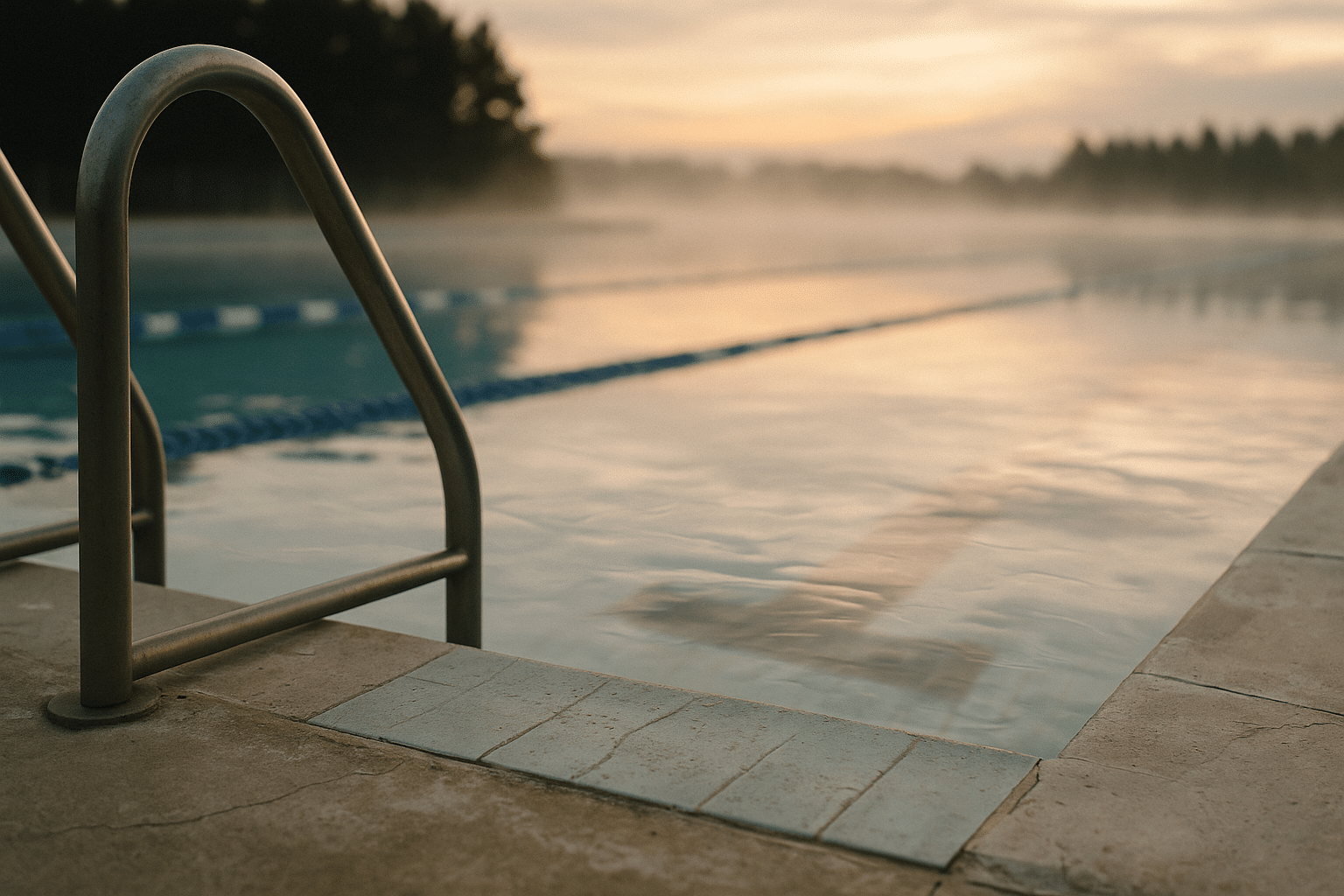
Explore the world of swimming
Outline
– The benefits of swimming: physiology, performance, and mental health
– Technique fundamentals: hydrodynamics and stroke mechanics you can actually feel
– Training frameworks: plans for beginners, fitness seekers, and performance-driven swimmers
– Places and gear: pools versus open water, equipment essentials, and logistics
– Safety, community, and a lifelong path in the water: a practical conclusion
Introduction
Swimming is both ancient and surprisingly modern: a human answer to the simple question of how to move through a dense, shifting medium with grace and efficiency. It engages the heart, lungs, and nearly every major muscle group, all while buoyancy eases joint stress that land sports can’t avoid. For many, that combination makes swimming a reliable path to fitness, a helpful cross-training tool, or a calming practice that turns laps into meditation. In a world that asks us to sit and scroll, water asks us to breathe, glide, and focus. This article explores the science-backed benefits, the key techniques, practical training plans, and the logistics that make swimming accessible—ending with an action-oriented conclusion to help you find your own rhythm in the water.
The science-backed benefits of swimming: body, brain, and longevity
Water changes the rules of movement. Because water is roughly 800 times denser than air, every pull and kick encounters resistance from the first inch. That resistance builds muscular endurance without the impact loading common in land-based activities. At neck depth, buoyancy can reduce effective body weight by around 90%, which explains why swimming is a favored option for people managing joint pain, returning from injury, or simply looking for low-impact exercise that still challenges the cardiovascular system.
The cardio story is compelling. Regular lap swimming at a moderate pace can elicit oxygen uptake improvements comparable to steady-state cycling, and many recreational swimmers report heart-rate zones in the same ranges used for structured endurance training. As a general guide, a 70–80 kg adult may expend roughly 400–700 kcal per hour depending on stroke choice, pace, temperature, and technique efficiency. Unlike activities that emphasize either upper or lower body demand, swimming involves a coordinated chain: shoulders, lats, core, hips, and legs move in precise timing. This whole-body recruitment contributes to energy cost and to balanced strength development when technique is sound.
The mental-health dimension is just as meaningful. Immersion and rhythmic breathing can calm the autonomic nervous system, nudging heart rate variability upward and stress hormones downward after consistent sessions. Many swimmers describe a “quiet focus” that arrives after the first few hundred meters—an experience shaped by bilateral breathing patterns, the gentle white noise of bubbles, and the single-task attention required to hold form. Emerging research suggests aquatic exercise can support sleep quality and mood, complementing psychotherapy or medical care where appropriate.
Safety and risk deserve equal clarity. Overuse injuries such as swimmer’s shoulder typically arise from poor mechanics (e.g., crossing over midline in freestyle or breathing with excessive neck rotation) combined with rapid volume increases. Simple technique cues and progressive loading lower that risk significantly. When compared to running, injury incidence in swimming is generally lower on a per-hour basis, largely due to reduced impact. However, water introduces distinct hazards—chiefly drowning—so adherence to facility rules, gradual skill development, and, when possible, supervised environments are non-negotiable.
In short, swimming offers a rare triad: cardiovascular development, muscular endurance, and mental composure. For people seeking weight management, joint-friendly conditioning, or cross-training, it stands among the most versatile choices—sustainable across seasons and adaptable to nearly every fitness level.
Technique fundamentals: from bodyline to the feel for the water
Technique is the quiet engine of enjoyable, efficient swimming. Efficiency starts with body position—long, level, and balanced. Imagine your sternum pressing slightly toward the bottom as your hips rise, creating a streamlined bodyline that slices rather than plows. A small kick stabilizes the line; the kick is a metronome, not a motor. Breathing preserves rhythm, not interrupts it. Exhale smoothly underwater so the mouthful of air you take during the breath is quick and calm.
Freestyle mechanics center on timing and alignment. After the hand enters in line with the shoulder, it should extend forward just under the surface, then initiate an early vertical forearm position to “catch” the water. The pull moves past the rib cage with a firm forearm and relaxed wrist, finishing near the hip. Combine that with body rotation of roughly 40–60 degrees from the line, and the stroke becomes a rolling, anchored movement. Common pitfalls include crossing over the midline, overkicking to compensate for sinky hips, and lifting the head forward to breathe. Each raises drag and disrupts balance.
Backstroke mirrors freestyle in many ways without the breathing challenge. Maintain a neutral head with ears submerged, eyes to the sky or ceiling. Entries should be pinky-first with a strong catch and patient rotation. Breaststroke is a timing dance: the glide is the payoff, so keep the pull short and powerful, then kick as the arms shoot forward into a streamlined position. Butterfly relies on rhythm-driven undulation from the chest and core; the goal is to move forward over the water, not up and down. Small adjustments in head position and kick amplitude can transform effort into momentum.
Drills and cues help build that elusive “feel for the water.” Consider these simple tools integrated into warmups or easy sets:
– Single-arm freestyle with fins: focus on rotation and a patient catch.
– 3/5/7-breath pattern: practice bilateral breathing while maintaining rhythm.
– Sculling at the front: refine forearm angle and pressure sensitivity.
– Breaststroke kick on back: reinforces knee-hip timing without spinal strain.
– Butterfly with short fins: emphasizes body roll and controlled undulation.
Technique thrives on feedback. Short video clips from the pool deck, periodic stroke counts per length, and pacing with a tempo trainer or simple wall clock all add objective data. But equally valuable are sensory markers: the hush of a stable head line, bubbles minimized off the fingertips, and the sense that each pull sets an anchor. When these cues align, speed becomes a byproduct of reduction in drag—not just an increase in force.
Training frameworks for every level: structure, progress, and variety
A well-structured plan transforms random laps into measurable progress. Three pillars shape reliable programming: frequency, intensity, and skill focus. Most adults see meaningful gains with 2–4 sessions per week. As for intensity, an easy guide is the rate of perceived exertion (RPE) from 1 to 10, where 3–4 feels conversational, 5–6 is comfortably challenging, and 7–8 is strong but sustainable in intervals. Skill focus ensures every session contains a slice of deliberate practice—drills, pace control, or starts and turns in pool settings.
For beginners, the early goal is comfort, breathing control, and repeatable distances. A sample 4-week progression might look like this:
– Weeks 1–2 (2x/week): 600–900 m per session. Warm up 4 x 50 easy with 20–30 seconds rest; 6 x 25 drill/swim by 25; 4 x 50 at RPE 4 with 30–40 seconds rest; finish with easy 100.
– Week 3 (3x/week): 900–1,200 m per session. Add 6 x 50 at RPE 5, negative split within each 50 (second half slightly faster).
– Week 4 (3x/week): 1,200–1,500 m per session. Introduce 8 x 50 at RPE 6, 20 seconds rest, maintain stroke count within 1–2 of the warmup.
For fitness and weight management, variety sustains adherence and caloric expenditure. Consider a weekly rhythm:
– Session A (aerobic base): 3 x 400 at RPE 4–5, 45–60 seconds rest, hold even pace.
– Session B (skills + threshold): 12 x 100 at RPE 6, 20 seconds rest; focus on consistent split times.
– Session C (mix): 20 x 50 alternating RPE 4 and 6, 15 seconds rest; include 8–10 minutes of drills at the start.
For performance-oriented swimmers, add race-pace segments and short sprints to recruit neuromuscular speed:
– Quality set: 16 x 25 at RPE 8–9, 30–40 seconds rest, targeting strong push-offs and clean breakouts.
– Threshold ladder: 100–200–300–400–300–200–100 at RPE 6–7 with 20–45 seconds rest, aiming for negative split on the way down.
– Speed endurance: 8 x 50 with the first 15 meters fast, the rest smooth, 25–30 seconds rest; maintain form when fatigue creeps in.
Two elements bind these frameworks: progression and recovery. Increase either total distance or intensity gradually—roughly 5–10% per week for many adults—and schedule easier weeks every 3–5 weeks to consolidate gains. Include mobility for shoulders and thoracic spine, and simple dryland strength like rows, pulldowns, planks, and hip hinges 2–3 times weekly, adjusted to swimming load. Finally, track a few metrics—average pace on staple sets, stroke count, and RPE—to see trends. If pace slows while RPE rises for several sessions, it may be time to reduce volume, improve sleep, or reemphasize technique.
Pools versus open water, gear essentials, and smart logistics
Where you swim shapes how you swim. Pools deliver consistent conditions: measured distances, walls for turns, lane lines that soften chop, and lifeguard coverage in many venues. That consistency supports precise pacing and technique work. Open water offers adventure and specificity for triathletes or distance enthusiasts. Lakes are often calmer but can be cold with variable visibility; coastal swims add currents, tides, and waves; rivers introduce flow and obstacles. The skill sets overlap, but the demands differ in navigation, sighting, and temperature management.
Choosing a facility or location comes down to safety, accessibility, and your goals. Useful considerations include:
– Water quality and sanitation: ask about testing frequencies and posted results; clear water with mild odor often signals proper balance.
– Crowd patterns: off-peak hours allow steadier sets and fewer interruptions.
– Lane etiquette: circle swim in the same direction, leave the wall with spacing, and finish at the corner to let others turn.
– Open-water protocols: never swim alone; use a visible tow float where permitted; choose routes parallel to shore; understand local conditions and rules.
Gear can be simple yet effective. Essentials for most swimmers include:
– Well-fitting goggles suited to lighting conditions and face shape.
– A cap to reduce drag and keep hair contained.
– Fins for targeted drills and body position awareness.
– A pull buoy and paddles for upper-body focus (use sparingly to protect shoulders).
– A kickboard for kicking sets and position drills.
– A tow float and bright cap for open water, plus an appropriate thermal layer when temperatures drop.
Logistics extend beyond the pool deck. Pack a small kit: a quick-dry towel, anti-fog solution or a gentle rinse method for goggles, flip-flops for hygiene, and a reusable bottle to stay hydrated. Chlorinated environments can dry skin and hair; a simple rinse pre- and post-swim helps. For those sensitive to cold, a brief warm-up on deck—arm circles, band rows, and light squats—primes muscles and reduces the shock of immersion.
Finally, think about sustainability and cost. Community pools or shared-lane programs often offer economical access. When venturing into open water, plan transport and weather contingencies. Temperature dictates session length; even strong swimmers can lose dexterity in cold water, so monitor time and exit with reserves to spare. With a bit of planning, your gear bag and venue choices become quiet allies—supporting consistent training rather than complicating it.
Safety, community, and a lifelong path in the water: conclusion and next steps
Water rewards respect. Whether you are navigating a quiet lane or a breezy lakeshore, risk management must be habitual. In pools, that means heeding lifeguards, practicing lane etiquette, and building distance gradually. In open water, conditions define the day. Rip currents, for example, can move at 0.5–2 meters per second; if you encounter one, staying calm, floating or treading to conserve energy, and swimming parallel to shore until you exit the current are time-tested strategies. Cold water reduces fine motor control; acclimatize with short entries and exit with plenty of warmth waiting on land. The most important guideline: do not swim alone.
Community elevates safety and enjoyment. Many towns host adult programs that welcome all levels, offering structured sets, feedback, and camaraderie. Group sessions provide natural pacing, friendly accountability, and a shared learning environment where cues click faster. For families, early water orientation for children and consistent supervision create safer habits that can last for decades. Globally, accidental drowning remains a significant cause of preventable death; skills gained in lessons—floating, controlled breathing, and simple propulsion—save lives as much as they serve fitness.
Inclusivity matters. Aquatic facilities increasingly accommodate a range of abilities with ramps, lifts, and warm-water therapy pools. People managing joint conditions, pregnancy, or mobility differences often find the water uniquely welcoming. With thoughtful coaching and progressive goals, many discover not only comfort but also surprising competence in the pool or open water. Progress need not be dramatic to be meaningful; shaving a few strokes per length or mastering a relaxed bilateral breath can be milestones worth celebrating.
As you look ahead, outline a straightforward plan:
– Choose two to four weekly windows you can realistically protect.
– Pair each session with a simple focus: bodyline, catch timing, or pacing.
– Track one metric per month—stroke count on a staple set, or average pace on 8 x 50.
– Add variety every 3–4 weeks: a new drill, a different venue, or a gentle challenge set.
The water has a way of reflecting effort with unusual honesty. On days of calm, you’ll feel the glide lengthen. On harder days, the line asks for patience rather than force. Either way, the ritual rewards attention—breath by breath, length by length. If you start where you are, progress steadily, and lean on community and safety, swimming can become more than exercise. It can be a lifelong practice that steadies the mind, strengthens the body, and keeps you connected to a simple truth: forward is smoothest when you let the water teach you how to move.


